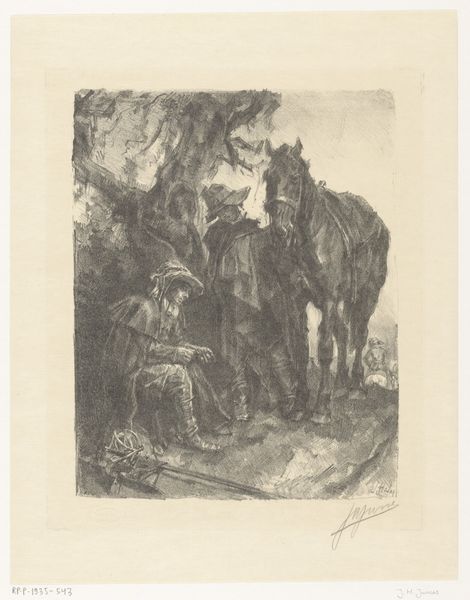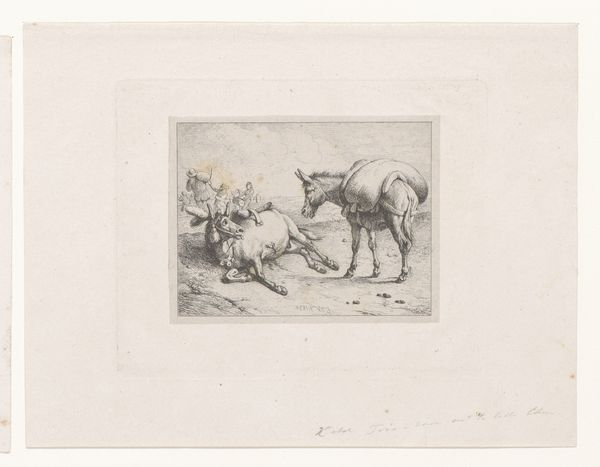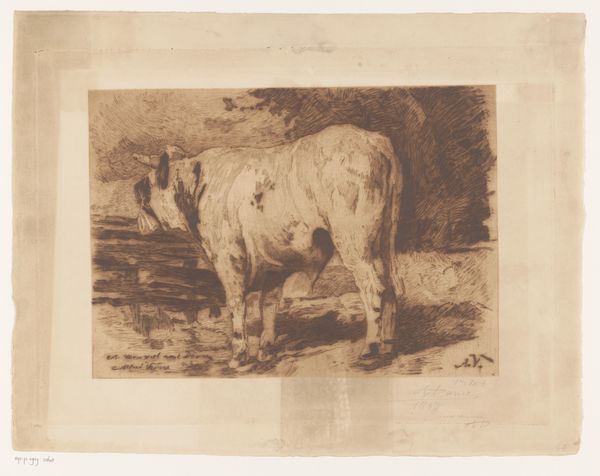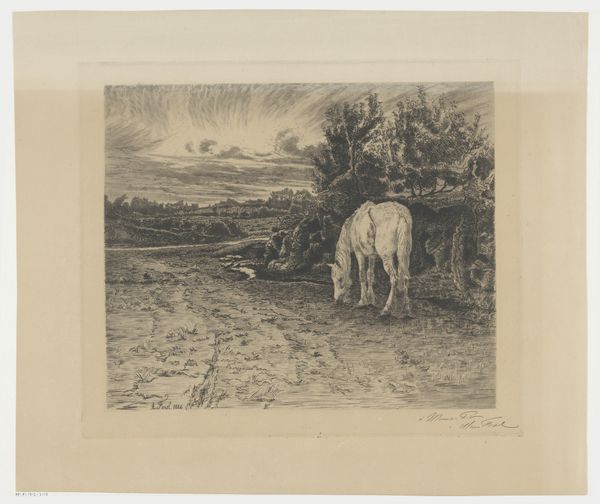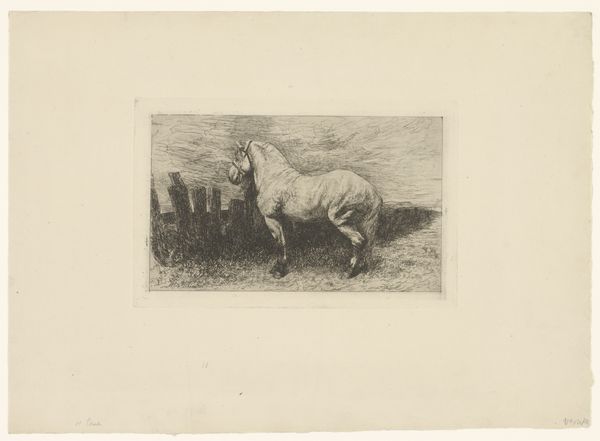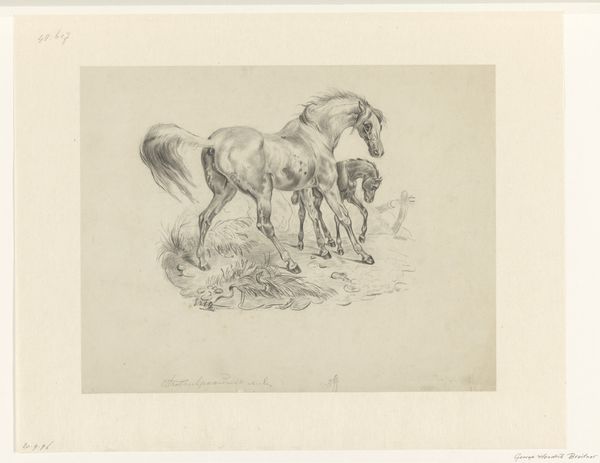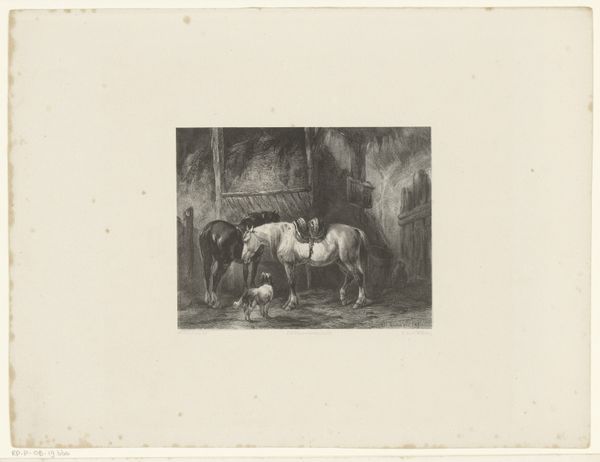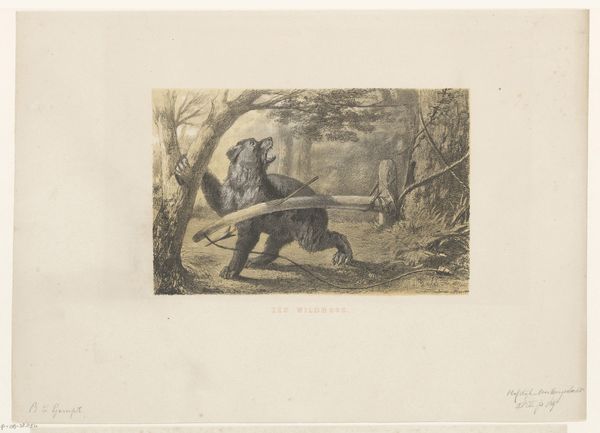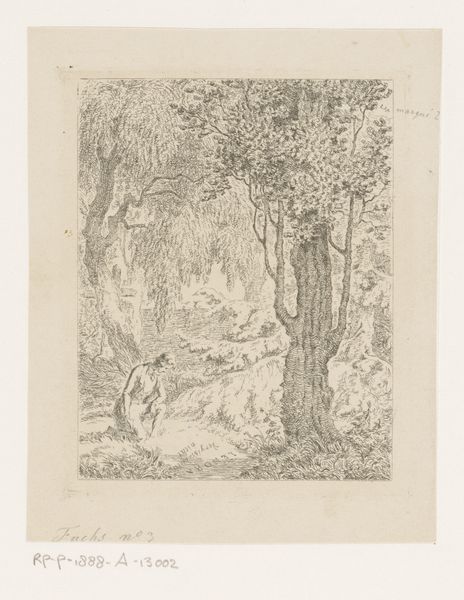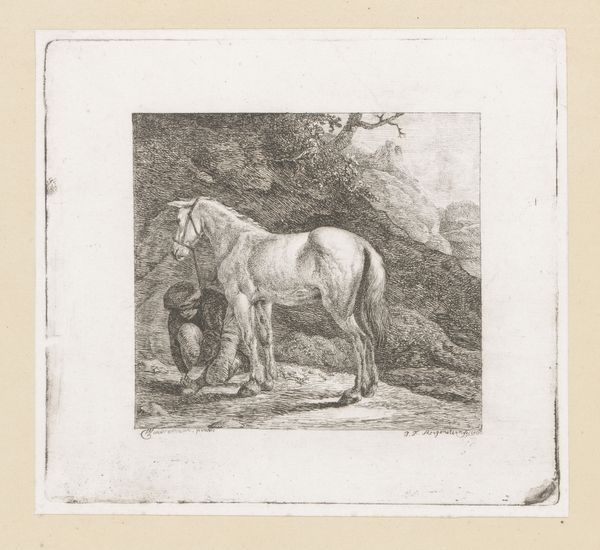
print, etching
# print
#
etching
#
landscape
#
genre-painting
#
realism
Dimensions: 119 mm (height) x 102 mm (width) (billedmaal)
Editor: Here we have Waldemar Bøhme’s etching from about 1870 to 1875, called *Wild Animals at a Feeding House in Winter*. The realism, and the black and white rendering, give it quite a stark feeling, wouldn't you say? What do you see in it? Curator: Immediately I’m drawn to the structure itself. What does it mean, culturally, that we feel the need to provide for wildlife in this way? The thatched roof becomes a symbol of protection, yet it also speaks to human intervention, almost a forced dependence. Do you notice how the animals cluster together? Editor: Yes, they seem almost wary. The one at the front, though, seems bold, stretching up. Curator: Indeed. That gesture is crucial. Think about how artists throughout history have depicted animals, particularly deer. Often they symbolize innocence, a connection to nature, and even vulnerability. What does it suggest when one reaches so deliberately for sustenance provided by humans? Is it gratitude, desperation, or something in between? Editor: I hadn’t thought of that relationship of dependence, but that makes a lot of sense. Curator: Bøhme has captured more than just a scene; he's documented an evolving relationship, tinged with an unspoken agreement between humanity and the natural world. Editor: So it’s not just a genre painting of animals in winter; there's this whole story about humans and nature packed in. Curator: Exactly. These are the narratives images whisper, generation after generation. The way the image makes us reflect on the history of this shared space.
Comments
No comments
Be the first to comment and join the conversation on the ultimate creative platform.
